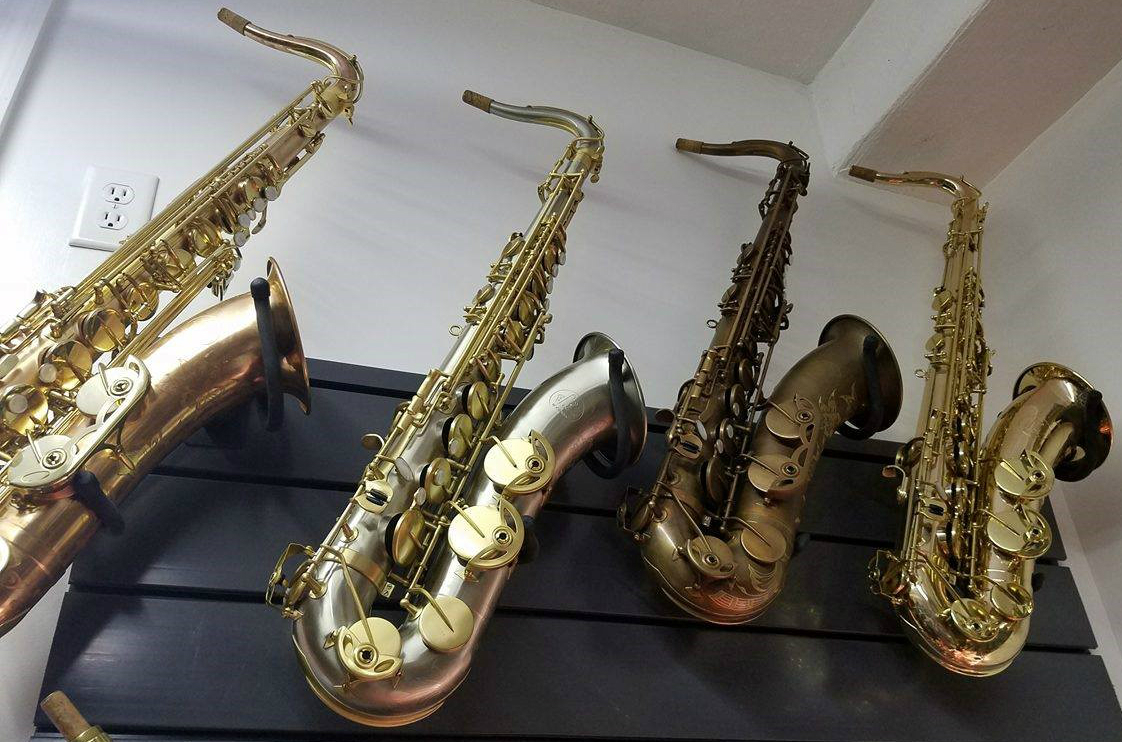JL Woodwinds Tenor Saxophone

Introduction
With the influx of more saxophone brands entering the market, it has gotten more difficult for the consumer to figure out which brand and model is worth checking out. Due to the rising prices for saxophones across some of the most popular brands today: Yamaha, Selmer, Keilwerth, and Yanagisawa, other brands have entered the market with a more cost effective saxophone that supposedly embodies the same or similar features too many highly sought after vintage saxophones. With the improved quality of materials and assembly of saxophones manufactured out of Taiwan, China, Vietnam, etc., various shops have decided to release their own line of saxophones. I have found many of these in-house saxophones to be a cost-effective alternative to various sought after vintage saxophones (BA, SBA, MARK VI, Conn 10M, King Super 20, etc.). A few months back, while visiting N.Y.C, I decided to stop by JL Woodwind Repair (owned by John Leadbetter) to get my horn setup. While at his shop, John wanted me to try his line of tenor saxophones called JL Woodwinds. Today, I will be reviewing the JL Woodwinds tenor saxophone based on: Appearance, Build Quality, Tone & Response, Action, Intonation, and my Final Thoughts.
Appearance
When I was at John’s shop, he had four different finishes in stock. The finishes were: bronze with gold lacquered keys, a nickel silver with matte gold keys, a vintage finish (un- lacquered brass) and finally the rose brass which had a lighter finish compared to the bronze model with gold lacquered keys. At first glance, the JL Woodwinds tenor saxophones reminded me of a vintage SBA or Mark VI based on key layout, parts, and an option for no high f# key. In addition, the engraving (which can be custom ordered) has the detailed floral engraving reminiscent of the vintage Selmer’s.
Build Quality
I found the build quality on the JL Woodwinds tenor saxophones to be very good. The materials/parts were sturdy with no blemishes or mis-cuts through-out which is something I have seen on some of the better Taiwanese horns currently on the market. John’s setup on each JL Woodwinds saxophone is truly what differentiates his saxophone line from just another horn coming from Taiwan, China Vietnam, etc. Many of the parts are common among many new Taiwanese saxophones I have seen such as: blue steel springs, Italian leather pads, white mother of pearl key touches, and metal resonators to name a few. Some key features on John’s JL Woodwinds tenor saxophone is key-fitting as well as tone-hole leveling across the entire saxophone. These additional steps do make a positive impact on the overall play-ability of the saxophone.
Tone & Response
I found the JL Woodwinds tenor saxophones each had a slightly different tone characteristics based on the finish. I found the nickel silver finish had a nice focus, edge, and warmth to the sound and overall found the sound to lean towards the neutral to medium bright when played in the upper register. The vintage finish, I found to have an edgier as well as slightly darker sound than the nickel silver. Both saxophones responded quickly with limited resistance. I found the overall tone & response shared similarities with various Mark VI’s saxophones I have played in the past. For those players who like more or less resistance, I know John has a couple different necks with various tapers which would be worth checking out.
Action
Of the four displayed in the picture above, I really enjoyed the nickel silver model which had light key action that was even through-out the entire range. Since the JL Woodwinds tenor saxophone can be customized, once you find the horn with the right sonic characteristics, John is happy to make further adjustments on the entire saxophone to fit your style of playing.
Intonation
I found the intonation was very good. I had no trouble playing from low Bb to high F# at various dynamic levels. The altissimo range also played nicely in tune with little adjustment.
Final Thoughts
The JL Woodwinds tenor saxophone(s) is an overall great saxophone. The main reason the JL Woodwinds saxophones are unique from many other brands on the market today is simply the setup. When I spoke with John, he designed these saxophones to be a cost-effective alternative option to what’s currently on the market as well as a representation of his repair work/setup abilities. I really enjoyed the JL Woodwinds tenor saxophones and if you are currently in the market for a very customized saxophone built for you, John’s saxophones are a great option to consider.
Please let me know your thoughts regarding your experiences with the JL Woodwinds lines of saxophones.
Website
http://www.jlwoodwindrepair.com/






December 12, 2019 @ 10:36 pm
Thanks for the review of John’s line of saxophones. I’m aware of the great improvements in saxes coming out of Asia and am interested in knowing which country is making John’s beautiful saxophones.